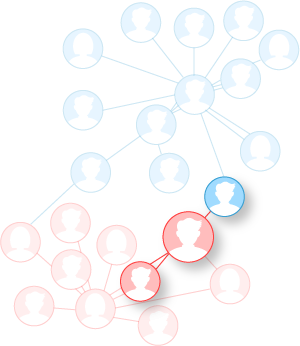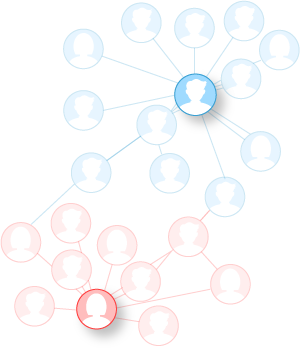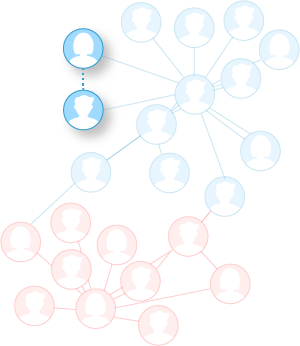ArangoDB v3.13 is under development and not released yet. This documentation is not final and potentially incomplete.
Generative Artificial Intelligence (GenAI) and Data Science
ArangoDB’s set of tools and technologies enables analytics, machine learning, and GenAI applications powered by graph data
ArangoDB Platform
ArangoDB provides a wide range of functionality that can be utilized for data science applications. The core database system includes multi-model storage of information with scalable graph and information retrieval capabilities that you can directly use for your research and product development.
ArangoDB also offers a dedicated GenAI Suite, using the database core as the foundation for higher-level features. Whether you want to turbocharge generative AI applications with a GraphRAG solution or apply analytics and machine learning to graph data at scale, ArangoDB covers these needs.
GenAI Suite
The GenAI Suite is comprised of two major components:
- GraphRAG: A complete solution for extracting entities from text files to create a knowledge graph that you can then query with a natural language interface.
- GraphML: Apply machine learning to graphs for link prediction, classification, and similar tasks.
Each component has an intuitive graphical user interface integrated into the ArangoDB Platform web interface, guiding you through the process.
Alongside these components, you also get the following additional features:
- Graph Visualizer: A web-based tool for exploring your graph data with an intuitive interface and sophisticated querying capabilities.
- Graph Analytics: Run graph algorithms such as PageRank on dedicated compute resources.
- Jupyter notebooks: Run a Jupyter kernel in the platform for hosting interactive notebooks for experimentation and development of applications that use ArangoDB as their backend.
- Public and private LLM support: Use public LLMs such as OpenAI or private LLMs with Triton Inference Server.
- MLflow integration: Use the popular MLflow as a model registry for private LLMs or to run machine learning experiments as part of the ArangoDB Platform.
- Integrations: Use ArangoDB together with cuGraph, NetworkX, and other data science tools.
- Application Programming Interfaces: Use the underlying APIs of the GenAI Suite services and build your own integrations. See the API reference documentation for more details.
From graph to AI
This section classifies the complexity of the queries you can answer with ArangoDB and gives you an overview of the respective feature.
It starts with running a simple query that shows what is the path that goes from one node to another, continues with more complex tasks like graph classification, link prediction, and node classification, and ends with generative AI solutions powered by graph relationships and vector embeddings.
Graph Queries
When you run an AQL query on a graph, a traversal query can go from a node to multiple edges, and then the edges indicate what the next connected nodes are. Graph queries can also determine the shortest paths between nodes.
Graph queries can answer questions like Who can introduce me to person X?

See Graphs in AQL for the supported graph queries.
Graph Analytics
Graph analytics or graph algorithms is what you run on a graph if you want to know aggregate information about your graph, while analyzing the entire graph.
Graph analytics can answer questions like Who are the most connected persons?

ArangoDB offers Graph Analytics Engines to run algorithms such as connected components, label propagation, and PageRank on your data. This feature is available for the ArangoGraph Insights Platform. See Graph Analytics for details.
GraphML
When applying machine learning on a graph, you can predict connections, get better product recommendations, and also classify nodes, edges, and graphs.
GraphML can answer questions like:
- Is there a connection between person X and person Y?
- Will a customer churn?
- Is this particular transaction Anomalous?

For ArangoDB’s enterprise-ready, graph-powered machine learning offering, see ArangoGraphML.
GraphRAG
GraphRAG is ArangoDB’s turn-key solution to transform your organization’s data into a knowledge graph and let everyone utilize the knowledge by asking questions in natural language.
The overall process of GraphRAG involves the following:
- Creating a Knowledge Graph from raw text data.
- Identifying and extract entities and relationships within the data.
- Storing the structured information in ArangoDB.
- Clustering each closely connected set of entities into semantic contexts via topology-based algorithms and summarization.
- Using such semantically augmented structured representation as the foundation for efficient and accurate information retrieval via lexical and semantic search.
- Integrating retrieval methods with LLMs (privately or publicly hosted) to augment responses using both structured and unstructured data, providing accurate responses with the desired format and degree of detail for each query.
To learn more, see the GraphRAG documentation.
Knowledge Graphs
A knowledge graph can be thought of as a dynamic and interconnected network of real-world entities and the intricate relationships that exist between them.
Key aspects of knowledge graphs:
- Domain-specific knowledge: You can tailor knowledge graphs to specific domains and industries.
- Structured information: Makes it easy to query, analyze, and extract meaningful insights from your data.
- Accessibility: You can build a Semantic Web knowledge graph or using custom data.
LLMs can help distill knowledge graphs from natural language by performing the following tasks:
- Entity discovery
- Relation extraction
- Coreference resolution
- End-to-end knowledge graph construction
- (Text) Embeddings
Sample datasets
If you want to try out ArangoDB’s data science features, you may use the
arango-datasets Python package
to load sample datasets into a deployment.
